The Relationship is the Project: A guide to working with communities
The strength of this book lies in its breadth. Much like the diverse communities represented in its 32 chapters, The Relationship is the Project demonstrates the principles it describes. Featuring the foundational tenets of community-engaged work, but going beyond these, the chapters explore important questions including working with First Nations communities, cultural safety, intersectionality and self-determination.
READ REVIEW
↓
The Relationship is the Project:
A guide to working with communities
EDITed by Jade Lillie and Kate Larsen with Cara Kirkwood and Jax Brown | 2024
Community-engaged practice was once termed ‘community arts and cultural development’. It is a way of working with communities—in all their many forms—while nurturing the relationships that are central to any successful project. In The Relationship is the Project Jade Lillie and Kate Larson with Cara Kirkwood and Jax Brown have brought together a fantastic selection of writers to examine and describe best practice in this heterogenous industry.
The strength of this book lies in its breadth. Much like the diverse communities represented in its 32 chapters, The Relationship is the Project demonstrates the principles it describes. Featuring the foundational tenets of community-engaged work, but going beyond these, the chapters explore important questions including working with First Nations communities, cultural safety, intersectionality and self-determination. These early chapters set the tone for the rest of the book, which foregrounds the importance of relationality and self-reflection as essential practices for the work we do with communities.
Other common themes emerge: time, listening, and flexibility. Expectations from funding bodies around the timing of delivery or project outcomes can be challenging, but the rewards for recognising the needs of the community and working with them flexibly and adapting to new directions if needed far outweigh the results from a business-as-usual, one-size-fits-all approach.
Importantly, chapters are written by members of these communities but intended for a wide audience. How arts workers, researchers, facilitators etc.—both inside and outside the community in question—navigate the power dynamics and privilege in project-based work usefully underpins many chapters here. The debate around many of the subjects discussed in this book are currently highly politicised, with debate shifting continuously. A text such as this, where authors patiently and succinctly unpack their subjects, is essential reading. I couldn’t think of a field, discipline or workplace that wouldn’t benefit from this information.
One example illustrates this, though many chapters fit the bill. In ‘Gender and public spaces’, Simona Castricum and CQ Quinan explain the ways in which our built architecture and the language used in public spaces can be used to oppress transgender, non-binary and gender diverse people. Gender neutral bathrooms might be a favourite topic for conservative media outlets, but as this chapter shows, the question of access and safety are also questions about who has the power to shape public space. By thinking about building codes, legislation and what safety looks like in public spaces, the authors unpack a complex and politicised topic. This chapter also defines the terms underpinning the gendering of public space, making it a useful primer for many audiences.
The concise chapters also unpack questions we might have about different communities, whether they be defined by age, location (online, regional/remote), gender and sexuality or questions around how we should deal with failure and accountability. Climate change and disaster recovery are the subject of three chapters.
In their chapter ‘Reworlding: Adapting to the climate emergency through relationality’, Jen Rae and Claire G Coleman argue that in the face of the climate emergency ‘it is critical to untether from our conventional ways of working across and within institutional structures and collaborate better by deepening and sustaining relationships beyond projects, transactions and funding cycles’ (p. 197). Located towards the end of the book, this chapter urges the reader to think expansively about our labour and positionality as people working with communities we may or may not belong to. How do we want the future to look, and how do our actions in the present contribute?
Chapters like this, and Scotia Monkivitch’s ‘Creative practice in disaster recovery’ and Karrina Nolan and Alex Kelly’s ‘Art and climate justice’ are usefully focused on the future, not just how we as researchers or facilitators or project managers might progress our skills for the projects we are doing right now, but a reminder that the work we all do won’t escape the impact of a changing climate.
A central question is reframed in many of the chapters: how can the people most impacted (by the project, the disaster recovery, the policy etc.) be better positioned to make decisions about the things impacting them? It has been distilled many times to: nothing about us without us. In this book, the reader benefits from a thorough unpacking of this philosophy in pithy chapters, each concluding with a ‘things to keep in mind’ section. Including a chapter on class is particularly welcome, given this is a slippery topic in the Australian context. A chapter illuminating the perspectives of neurodiverse communities would also complement the scope of this book.
Originally published in 2020, the 2024 edition from NewSouth brings together more than 40 thought leaders from across the arts, cultural and community sectors. Highly relevant and sure to remain current for many years, this is a must read and deserves a wide readership.
The Relationship is the Project: A guide to working with communities is published by NewSouth.
Guest Reviewer: Nikita Vanderbyl, PHA (Vic and Tas)

